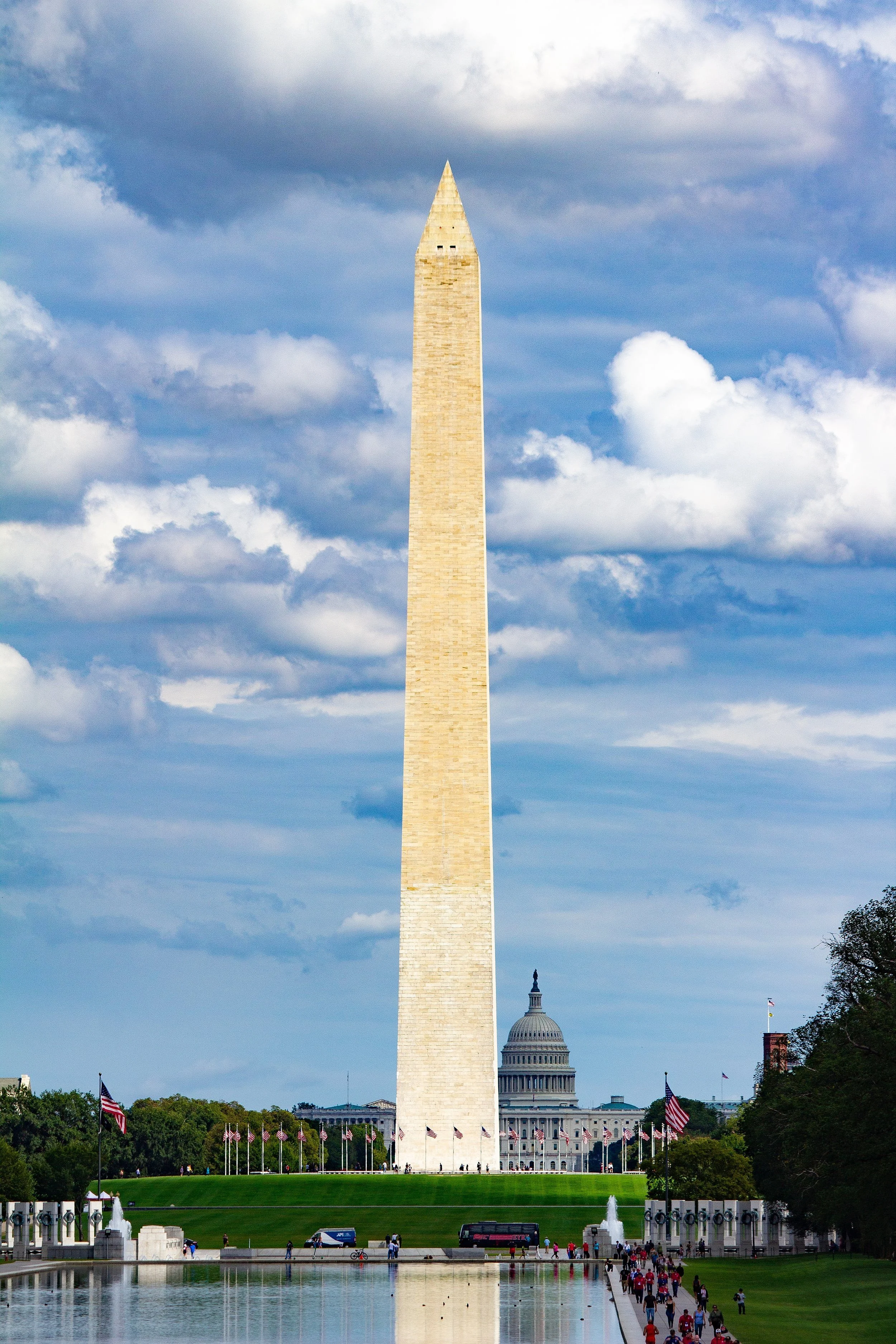The Washington Monument
With the first cornerstones being laid in 1848, the Washington Monument is a vision brought to life by the efforts of many, nearly 100 years in the making.
While the first piece of the monument was laid prior to the start of the Civil War, financial woes halted the construction by 1854. Not only was the project subject to financial woes, but the civil war and infighting brought the project to a point of uncertainty, leaving Americans unsure of its status or if it would ever see completion.
The idea for a monument to George Washington surfaced as early as the 1780s. The Revolution was over, the Constitution freshly inked, and the country was still figuring itself out. Washington had just voluntarily stepped away from power. This was a gesture that stunned the world and helped define American democracy. He was, as people said at the time, “first in war, first in peace, and first in the hearts of his countrymen.” He managed to see the new country to Independence and left them
From the laying of the first cornerstone to a nearly 40-year struggle afterward, the Washington Monument is a symbol of so many complexities, depending on the group that views it. The building was just as complex. Congress argued and private donors hesitated; it was often women’s organizations that kept the vision alive. Groups like the Washington National Monument Society helped in fundraising by pulling in public attention and collecting funds that Congress would not provide.
Fun fact: This group was supported by figures like Eliza Hamilton -the wife of founding father and immigrant-turned-Broadway Hit musical subject Alexander Hamilton)
*Cue the music: How does a bastard, orphan, son of a…. anyway, you get the idea.
Back to the subject at hand.. The women of the organization did their part. They organized bake sales, tea parties, door-to-door campaigns, and letter-writing drives. At a time when women couldn't vote, they found ways to wield influence by shaping the nation's memory. These were widows of revolutionaries, educators, abolitionists, and civic leaders—women who believed that preserving Washington’s legacy was about more than marble. It was about anchoring the republic in ideals worth remembering.
Their efforts weren’t just symbolic; they put in the work and raised money and applied political pressure that helped to get the project to the point of completion. They kept the Monument, and subsequently the memory of our first leader, alive through war, recession, and national fatigue. While speaking on those who helpe
Most people look up at the Washington Monument and see marble. A symbol. A sky-piercing obelisk built to honor the first president of the United States. But if you look a little longer and dig a little deeper, you’ll find it’s not just about George Washington. It’s about the people who built it, the ones who kept the idea alive when it faltered, and a nation that fought and scraped its way to freedom.
I’ll admit that my visit to Washington D.C. a few years ago didn’t last long enough to dive into the rich history of the hill that decides our livelihood, but I’m happy to know that I at least seen it. It’s always humbling to stand where our

